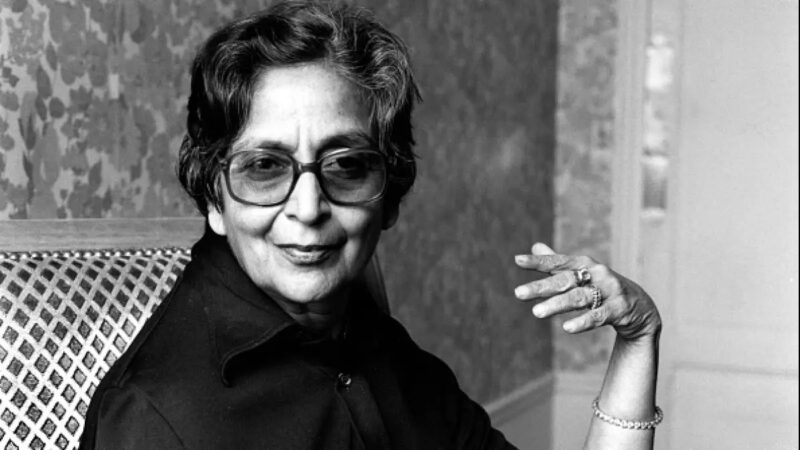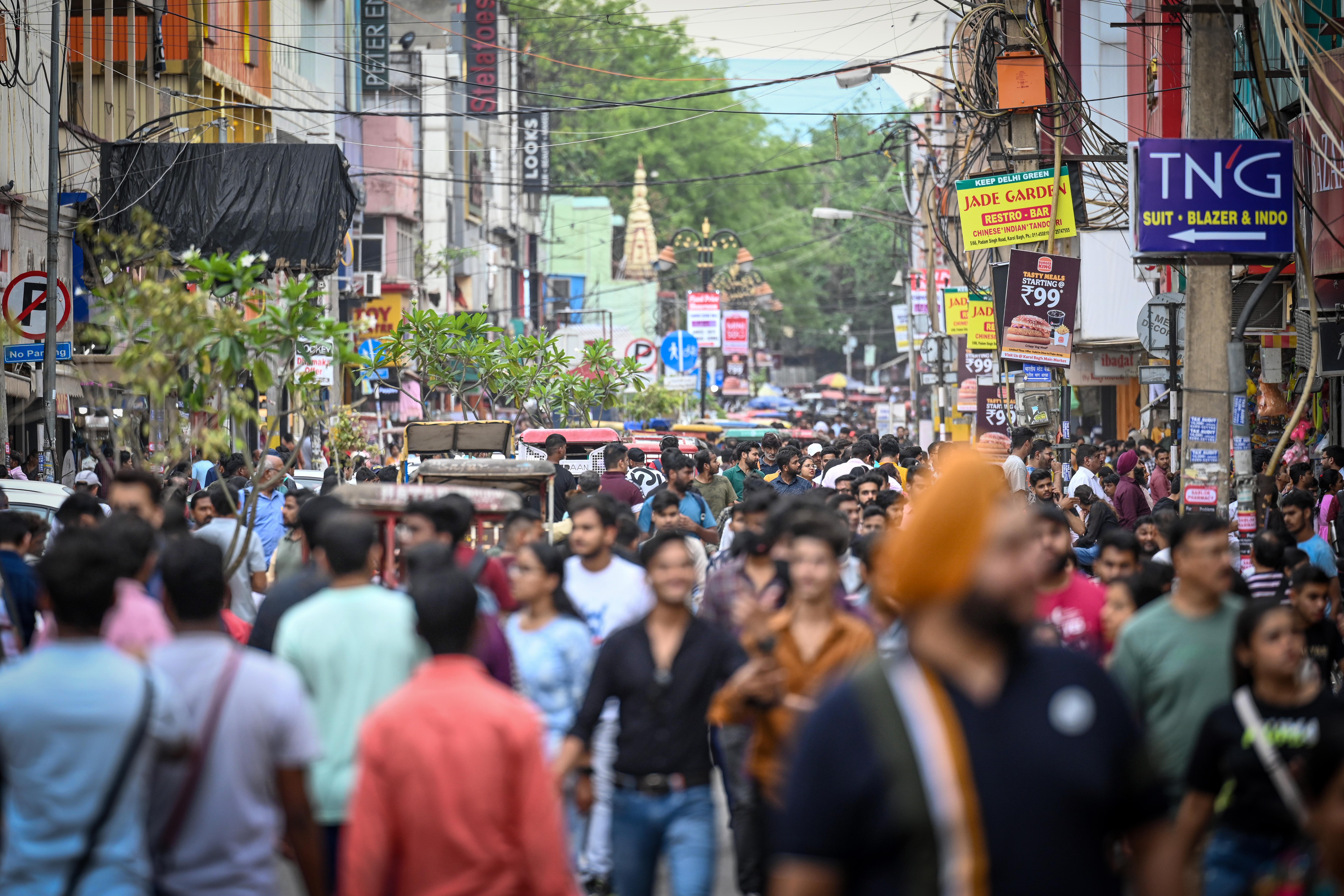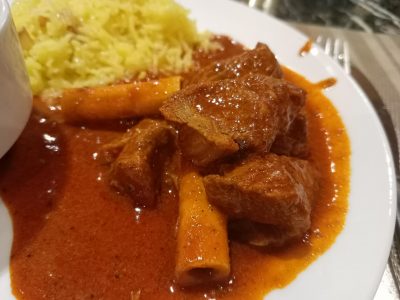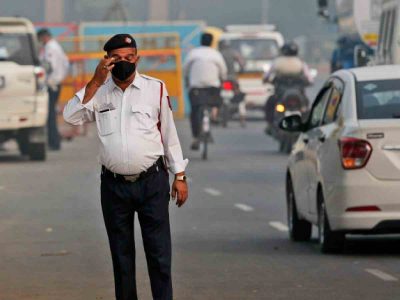Even though Sampuran Singh, a young Sikh, was working for a car mechanic in Karol Bagh, he dreamt of becoming an accomplished writer. When he found some time from his punishing schedule, he would meet his mentor Harnam Singh, a noted Punjabi writer, at the newly-opened South Indian Restaurant in the 1950s.
Over a cup of coffee or tea, both would talk about contemporary trends in poetry.
Sampuran Singh moved to Mumbai in the fifties, and eventually made a name for himself in the tinsel town, as Gulzar.
But the ‘South Indian Restaurant’, which began in 1955, continued to serve him and many generations of men/women of letters.
Arguably, it was among the first restaurants of Karol Bagh. When noted Hindi and Punjabi author, Trilok Deep, recently visited Karol Bagh, he was glad to see it full of life, energy and shoulder-rubbing crowd. Karol Bagh is known for all such things since long. While taking a stroll there, he moved to Ajmal Khan Road where he had visited the legendary restaurant as recently as 2018.
He had spent many, many evenings at the restaurant sitting with celebrated Punjabi and Hindi authors.

This is where he saw artists like Ram Kumar, Krishan Khanna, Syed Raza and others involved in animated discussions. However, the 85-year-old Trilok Deep got a shock of his life when he learnt that his favourite joint is no longer there. It shut down post-Covid. A PG accommodation has opened there instead.
The restaurant had witnessed endless discussions and debates among Punjabi/ Hindi writers such as Sahitya Akademi award winner, Dr Harbhajan Singh, Kartar Singh Duggal, Mahindra Kaur Gill, Harnam Singh among others.
It is said that Gulzar had started writing poetry after he befriended Harnam Singh. They lived together in a dingy room in Karol Bagh.
All these writers have lived in Karol Bagh, Patel Nagar, Rajinder Nagar and nearby areas. They were all partition refugees from across the border and they were trying to settle in this alien city.
“For the writers, the restaurant was like a second home. It is here they had their first tryst with South Indian delicacies like Dosa, Idli and Vada. The icing on the cake was very reasonable rates and freedom to sit there for hours together even if you do not order anything,” Dr Narinder Mohan once said.
Mohan had authored the definite biography of Sadat Hasan Manto.
If the restaurant became a rage among writers and teachers, due credit must be given to humility personified CS Mani Aiyer, the owner. Those were the days when Karol Bagh was full of refugees and it was developing as a big market slowly. Aiyer’s son, Bala, says that when his father opened the restaurant, people knew nothing about south Indian dishes. “However, once they tasted Dosa, Sambhar, Vada, Idli and other stuff, they started liking it,” says Bala, who was running the show at his restaurant with his brother till it shut down. Bala reveals that running a restaurant/ hotel became a huge task in Karol Bagh area after the deadly fire incident in a hotel in 2017 that claimed the lives of a couple of people.
That triggered the family to look beyond their restaurant business. Moreover, their kids wanted to do something else in life. Hence, they rented out the space.
There are still many people around who vividly remember the heated as well as acrimonious discussions among writers when India was fighting a war with China in 1962 and later with Pakistan in 1965 and 1971. Same kind of heated arguments were once again visible when the Emergency was declared and when Mandal Commission report was implemented.
But those debates always remain inconclusive as the participants never reached a consensus.
If there were more than two tables occupied by Punjabi writers, one table was reserved for the likes of Hindi writers such as Bhisham Sahni, Narendra Mohan, Narendra Kohli, Pratap Sehgal, Ganga Prasad Vimal, Maheep Singh and some teachers from Khalsa college a n d o t h e r private colleges on Pusa Road and Karol Bagh.
“However, the divide of language took a back seat when venerable writer Amrita Pritam visited here. Then everyone listened to her. After all, she was a respected writer for one and all. Though her visits became less and less once she shifted her residence from East Patel Nagar to Hauz Khas,” says Pratap Sehgal, a well-known author.
And for banker turned-artist Ram Kumar, South Indian Restaurant was like a second home as he lived in Western Extension Area in Karol Bagh only. He took his friends like SH Raza, MF Husain, J. Swaminathan, Krishen Khanna, and FN Souza to this place often. Sometimes his younger brother and famous writer, Nirmal Verma, used to give him company there.
Karol Bagh is seeing many changes and it is very much evident when you observe that several big brands of the market are no longer there.
For instance, Zohra Emporium is also history. It was a formidable name for ladies’ outfits in Karol Bagh.
“Zohra Emporium had established a name for itself. Thousands of p a r e n t s h a v e purchased sarees, l e h e n g a s a n d other items for their daughters and would-be daughters-in-law from here. All apparel and fashion accessories sold there were of premium quality,” says Rajesh Vacher, who runs his real estate business from Karol Bagh. Zohra Emporium served in Karol Bagh for over six decades before it shut down. However, the small street that was close to the emporium is still known as Zohra Street. That speaks volumes about the goodwill that it earned.
An east Delhi-based businessman, Manoj Sehgal says that his family purchased clothes when his sister got married and later when his daughter was married.
“The best part of it was that they would exchange the items sold without any problem,” informs Sehgal.
The office of Professor Arora at 28, Regarpura, of Rishte hi Rishte — Ek Baar Mil To Le fame, was at a shouting distance from Zohra Emporium. This address was special as walls on both sides of railway tracks near Delhi were painted with graffiti of Professor Arora’s matrimonial firm.
Surely, Arora was a legendary matchmaker. Thanks to him, countless marriages were solemnised. If you are 40-plus, then you would have seen Arora’s graffitis.

Old timers say that Prof. Arora was a socially active person in Karol Bagh. He started his matrimonial service in mid-1950s. Those were the days when very few matrimonial advertisements were published in newspapers.
Very swiftly he made a name for himself as a trusted match-maker. His office was thronged by parents of would-be brides and grooms.
Arora had developed a huge data bank of doctors, engineers, businessmen, teachers and others looking for a spouse. He used to charge for his service.
Rajesh Vacher says that Prof. Arora was extremely suave. He was not money minded. But, once his business grew thick and fast, money started flowing to him. And from that money, he started painting the walls in Delhi and outside Delhi with his advertisements. That proved to be a game-changer. He became an institution.
But as they say all good things come to an end, his business also suffered a setback once he passed away a couple of years ago. After him, his family members tried to run the show. Alas, they could not.
Now, 28, Regarpura has a new occupant and only memories of Prof. Arora are left. Last, but not the least, BSP leader Kanshi Ram also lived at Regarpura in 1970s. Those were his early days in Dalit politics.





